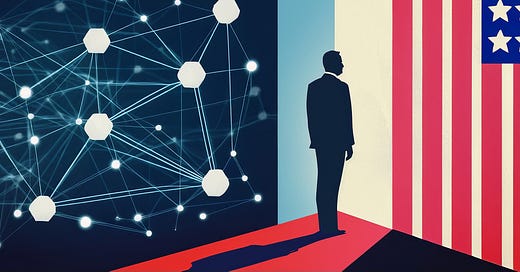
Developing and powering AI technologies will still account for the bulk of money spent in 2025 across the industry, but expect to see a lot more activity and cash going into one area in particular as it relates to AI: Lobbying.
In part because of where we’re at in the tech’s maturity cycle, and in part because it’s a time of change in the U.S. administration – a time in which you can have an outsized influence the next four years of policy (at least).
On Monday, two significant things happened along these lines, from two of the biggest companies in AI today. First, OpenAI posted an ‘Economics Blueprint,’ which is explicitly an input document regarding any potential upcoming government regulation decisions, compiled in a 15-page PDF for public consumption. Second, NVIDIA published a statement regarding the new expanded US chip export restrictions.
Both center on a prevailing theme that will likely only be exacerbated as the AI industry grows: Relations and interdependence with China.
In OpenAI’s economic blueprint, it’s laid out fairly quickly that the goal is to make sure that the lion’s share of an estimated $175 billion in dry powder among funds globally is directed towards AI projects operated and backed by the US, rather than funnelled towards those supported by China. It doesn’t call out other countries specifically, but spends a lot of time talking about the need for support from US allies, partners and ‘like-minded nations’ working together to counter and oppose CCP interests and their international allies.
Unsurprisingly, OpenAI also argues for relatively open access to publicly available data, and makes a case that AI training consumption is essentially equivalent to human consumption of the same – a nuanced take that would mean complaints against the company for using data for training without explicit permission in cases where it’s free to access for the average person browsing the web are without merit.
NVIDIA’s take, meanwhile, ends up on a very different part of the spectrum when it comes to the question of restrained or regulated economic interrelationships with China.
“While cloaked in the guise of an ‘anti-China’ measure, these rules would do nothing to enhance U.S. security,” is one choice quote from the NVIDIA post, authored by VP of Government Affairs Ned Finkle, continuing later: “As the first Trump Administration demonstrated, America wins through innovation, competition and by sharing our technologies with the world — not by retreating behind a wall of government overreach.”
It’s a not-very-subtle signal to the incoming administration that it’s hoping for a different outcome than what Biden has been pushing with its increasingly restrictive trade rules around AI infrastructure hardware. That is not surprising coming from NVIDIA, which has traditionally enjoyed a strong presence in China and enjoyed a position of strong dominance in that country’s AI chip market.
What is more interesting is the dissonance between these two missives, designed for public consumption but clearly aimed directly at Trump and his incoming administration, too. Both come from companies with foundational roles in the ongoing AI tech revolution, and both are fundamentally interlinked in many key ways. But it’s clear they have different priorities and incentives when it comes to some of the hottest-button issues in international regulation, which sets us up for a very interesting 2025.
These are just timely, illustrative examples of what I believe will become a key theme of 2025, as the rapid-fire percussive beats of technological improvements in AI give way to a steadier, more consistent cadence of calls upon governments both domestic and international for policy, monetary and regulatory support.








